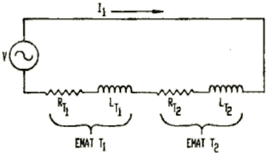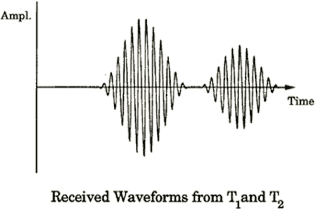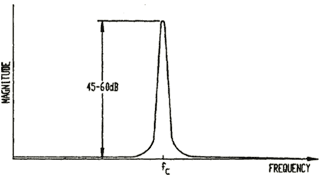Velocity Measurements with EMATs
Electromagnetic-acoustic transducers (EMAT) generate ultrasound in the material being investigated. When a wire or coil is placed near the surface of an electrically conducting object and is driven by a current at the desired ultrasonic frequency, eddy currents will be induced in a near surface region. If a static magnetic field is also present, these currents will experience Lorentz forces of the form
F is the body force per unit volume, J is the induced dynamic current density, and B is the static magnetic induction.
The most important application of EMATs has been in nondestructive evaluation (NDE) applications such as flaw detection or material property characterization. Couplant free transducers allows operation without contact at elevated temperatures and in remote locations. The coil and magnet structure can also be designed to excite complex wave patterns and polarizations that would be difficult to realize with fluid coupled piezoelectric probes. In the inference of material properties from precise velocity or attenuation measurements, the use of EMATs can eliminate errors associated with couplant variation, particularly in contact measurements.
Differential velocity is measured using a T1-T2---R fixed array of EMAT transducers at 0°, 45°, 90° or 0°, 90° relative rotational directions depending on device configuration.


EMAT Driver Frequency: 450-600 kHz (nominal)
Sampling Period: 100 ns
Time Measurement Accuracy:
Resolution 0.1 ns
Accuracy required for less than 2 KSI Stress Measurements: Variance 2.47 ns
Accuracy required for texture: Variance 10.0 nsW440 < 3.72E-5
W420 < 1.47E-4
W400 < 2.38E-4
Time Measurement Technique:
Fourier Transform-Phase-Slope determination of delta time between received RF bursts (T2-R) - (T1-R), where T2 and T1 EMATs are driven in series to eliminate differential phase shift due to probe liftoff.




Slope of the phase is determined by a linear regression of weighted data points within the signal bandwidth and a weighted y-intercept. The accuracy obtained with this method can exceed one part in one hundred thousand (1:100,000).